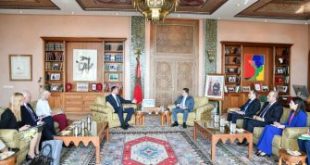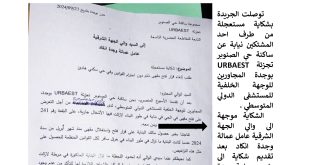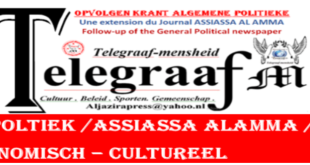الناس ونمط الحياة
الحرف اليدوية في السودان هي نشاط اقتصادي ومعبّر عن البيئة المحيطة وتسهم في التواصل البشري ، وآفاق طويلة مفتوحة للحوار بين الشعوب بالإضافة إلى كونها دعوات موروثة. أدت مساحة السودان الشاسعة وتنوع البيئات وتعدد القبائل إلى ظهور أنواع مختلفة
People and Lifestyle
The handicrafts in Sudan are an economic activity and expressive of the surrounding environment and contribute to the human communication, long opened horizons of dialogue among peoples in addition to being inherited vocations. The Sudan’s vast area, the diverse environments and multiple tribes led to the rise of miscellaneous kinds of handicrafts the most important of which are: –
1) Palm-leaf craft:
The palm leaves have long been introduced in manual skills; it is made in the form of braids to make baskets and carpets for prayers and beds, food-preserving hanging kit, fire fans, utensil-storing baskets and food covers the most famous and expensive of which is the Fashry (named after the capital of North Darfur State) which is beautifully colorful for which the leaves are tinted with a special dye. But the most important one of those works is the broom which is spread in north and central Sudan where palms are numerous.
2) Pottery:
It is one of the oldest crafts in Sudan which persisted in existence despite of changes of the lifestyles as many people prefer the water pots to the modern water-cooler. The Gamayr neighborhood of Omdurman is famous for the pottery industry. There are numerous sorts of pottery products like skillfully-made pots to keep drinking water, coffee, flowers and shade-plants.
Earthenware is deep-rooted in history and mince moving from the nomadic life to settlements, Man invented pottery by making ovens for burning it and the more luxurious and prosperous his life has become the more he has become skillful and innovative, inventing new, beautifully decorated designs of pots, reflecting his aesthetical taste and inventing skills as can be seen in the museums.
It is difficult for pottery to extinguish; it is capable of resisting the vicissitudes of time as people still use the pottery products in their daily life as a tradition that many people would not abandon the taste of the cold pot water for that of the electric water-cooler while others enjoy coffee only if they drink it from the coffee pot. There is, moreover, the amazing secret of an emotional linkage between the human-being and pottery as both originate from water and earth.
3) The shoe-making: –
The Sudanese pair of shoes is known as markoub and the men’s traditional markoub, a great survivor, is made from leather of several kinds and names. It is also one of the oldest handicrafts practiced in many parts of Sudan, although Darfur is the most famous for traditional shoe-making and the fashry is the most perfect and preferable markoub and so is the Genainah markoub, which is named after the capital of West Darfur State, and one made in El-Obeid; In El Obied, the zaribat Eish market place, is one of the most famous areas for this type of shoe. But the common denominator is that all are durable and made from goat or cow leather. The sole is made from cow leather, which is tanned and tarred, while the upper part is made from billy-goat leather which is stronger than that of the she-goat. The markoub is manually knitted with entwined cotton threads. There is another kind of markoub made in Aba Island near Kosti in the White Nile, which dates back to the Mahdist reign and has no differentiation between the right and left to make it easier for the Mahdist fighter to catch up with the battleground. The preferable kind of markoub is the flexible and shining one and all kinds are made manually.
The Sudanese Markoub’s lower part is made up of cow leather, which is tanned, then robbed with Katiran-black tar. The second phase comes that of making the shoe out of the leather. The Markoub is usually made out of he-goat hide, which is more expensive than that made of a she-goat. But all in all it is known to be very strong and durable. The inner part and inner sides are also mode of the he-goat leather. The stitching comes after cutting the first parts. It is usually done manually, using cotton thread). The shoes are made out of hides of cows, wild cats- known as Kadees in Sudanese colloquial Arabic- tiger, leopards. The most expensive markoub is the one made from the tiger or leopard leather which is very shiny and glossy. It is the most expensive and is worn by well-to-do men or bridegrooms.
4) Angaraib (Traditional bed): –
The Angaraib is a typical Sudanese bed with the frame made of wood and the main body woven with ropes made from palm leaves. It was first introduced in north Sudan and then spread all over the country. The Angaraib was in the past part of the royal furniture and was decorated by ivory, ebony and gold. It first appeared in northern Sudan and is locally known by different names (Angri by the Nubiin in northern Sudan, Dagdag with the Nile area inhabitants, the Sidab among the Beja and Gadou and shabbah in central Sudan).
This type of bed used to be royal furniture, decorated with ivory, ebony and gold
https://esudan.gov.sd/content/19747/People-Lifestyle
 TelegraafM موقع إلكتروني إخباري يصدر من أمستردام
TelegraafM موقع إلكتروني إخباري يصدر من أمستردام



